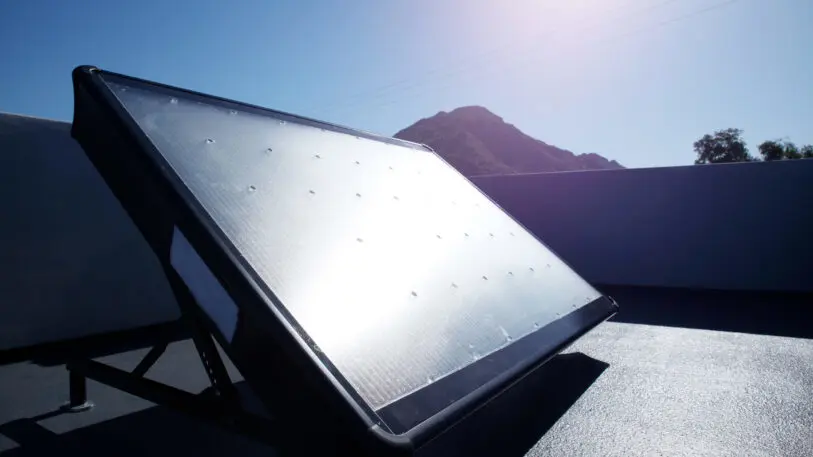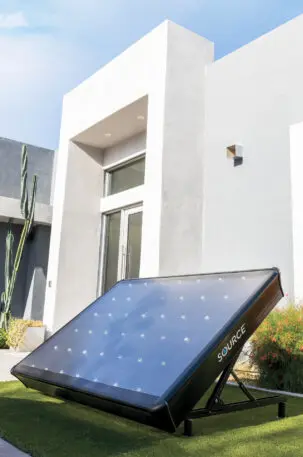Large swathes of the U.S. are suffering from water constraints due to a historic megadrought. Meanwhile, lead and other harmful chemicals are polluting municipal drinking water across the country. But an emerging solution could help people deal with dwindling resources: quite literally, pulling water out of thin air.
Arizona-based company Source Global has launched its direct-to-consumer hydropanels, which attach to individual homes and turn water vapor in the air into water. The panels could prove a more affordable solution in the long run than buying bottled water, while also cutting plastic waste from those bottles.
Source ships the panels, which are four-by-six feet in size and less than 300 pounds, directly to residents. They can be installed on the ground or on the roof, by residents themselves or with the help of a professional.

The solar-powered panels suck up vapor in the air and move it through moisture-absorbing materials—known as hygroscopic materials—using the same concept as salt in a shaker soaking up water. They then condense it and send it into a pressurized tank in the home, finally releasing it via a designated tap or the fridge.
Founded in 2014, Source Global has launched this tech in 52 countries; one in three people globally don’t have safe access to water. It has installed panels in residential communities—including in underserved areas like Navajo Nation and Aboriginal areas in Australia—but these have been larger panels connected to reservoirs. This is the first time smaller panels are available for individual homes. “It’s just very easily accessible, which our technology has not been before for our consumer,” says Kathleen George, Source’s general manager.
Ten percent of proceeds from the new panels will go toward funding panels in these underserved communities, or areas suddenly affected by water crises.
The demand for such a solution has risen as Western wells in the Colorado River Basin have dried up—and three states have pledged to reduce their water usage. Meanwhile, municipal sources have experienced contaminant chemicals, PFAs, and leaking lead. “This is not an issue that’s going to go away,” George says. “There’s a huge consumer need for being off-grid, being able to produce a renewable water source at home.”
In many cases, these residents are buying bottled water anyway, and some families spend $1,350 a year doing so. The panels could prove more affordable in the long term. Each one costs $2,950, and has an estimated lifespan of 10 years. The number of panels required depends on the climate and size of household. Panels in arid climates like Arizona may produce the equivalent of 180 16-ounce bottles a month; humid states like Florida could generate closer to 240.

The panels are currently available in 14 states, chiefly in the South and Southwest, and Source is working on improving its tech so that it would hold up against freezing climates in colder states.
At the moment, the panels provide drinking and cooking water, but the plan is to scale it so residents could use them for a “whole-house solution.” In the future, there could be three or four on site, George says, “to feed the entire water system in your home.”
Recognize your brand’s excellence by applying to this year’s Brands That Matter Awards before the early-rate deadline, May 3.
